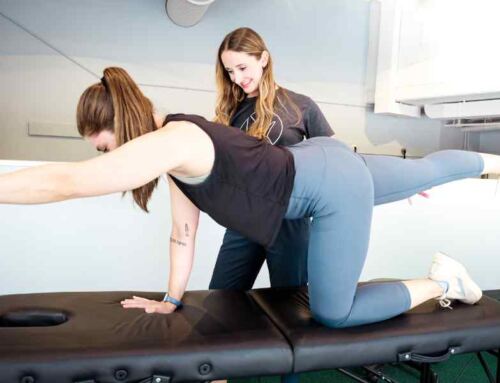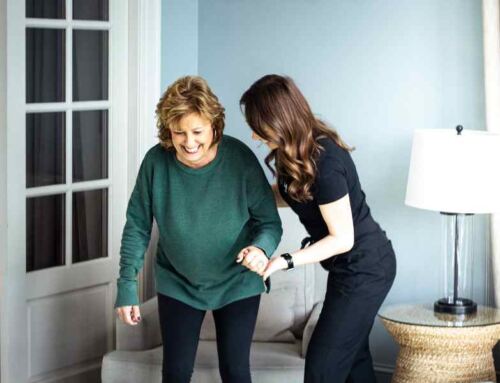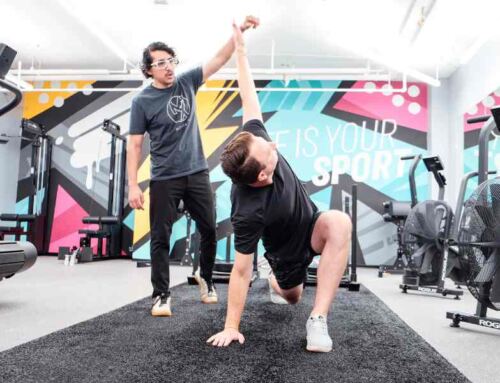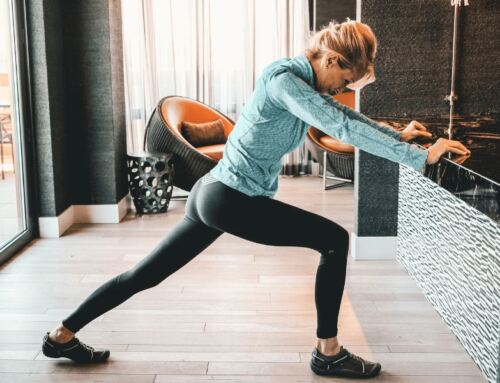I’ve worked with thousands of aging adults, and none of them are the same.
But they all want the same thing. I have heard countless variations of these phrases:
- Will I be able to go on trips anymore?
- Will I be able to run again?
- I just want to be able to walk trails, but…
- I’m worried about carrying my new grandson.
- Is it over? Am I done?
It’s not over. You’re not done. If you are reading this, you have barely begun.
We have work to do—and perhaps most unexpectedly, work itself is exactly what makes us live life to the fullest, for the longest.
If you’re reading this, the best of your movement is still ahead of you. Here’s how to out-train aging using one exercise routine to maximize your functional independence no matter your age!
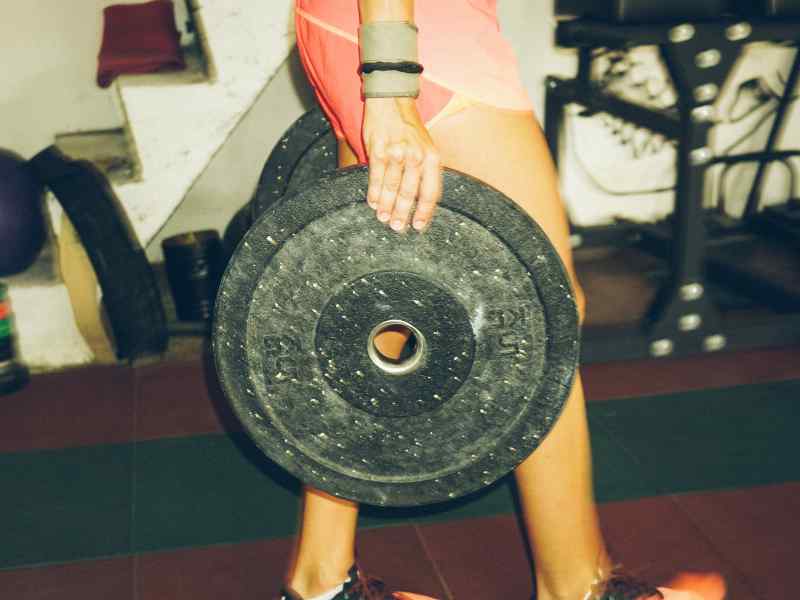
Functional Longevity
Longevity means “long life.”
This has been the focus of our healthcare system since its inception. And we have mostly succeeded. We now live much longer, on average, than anyone else ever did in any other epoch.
But what about our quality of life?
Functional longevity is all about how well you function as you age. In other words, functional longevity is about extending your quality of life as long as possible. This means confident, affirmative answers to questions like:
- Can I take care of myself without needing help?
- Am I you to travel, go out shopping, get what I need?
- Do I have trouble doing the things I want to do?
- Am I merely surviving?
Functional longevity is peak living—the soaring feat of life at maximal levels of vigor, resilience, and intelligence for your entire life, or close to it.
Survival is not enough.
But before any functional secrets of exercise, we need to address the pillars of health that hold up, and control, the wings of higher function.
The Foundations of Longevity
Nutrition
We know what to eat now. There are a ludicrous amount of scientific studies that tell us to eat fruits, vegetables, lots of protein, nuts, grains, fish, and unsaturated fats, with a focus on antioxidants, potassium, and omega-3. Eating these foods is associated with better health and longer lifespans.
One big issue with nutrition is the overwhelming complexity and sensationalism that bombards us everyday via the internet, TV, even family and friends. It can be impossible to sort through all the options.
Luckily, the procedure for good nutrition is quite simple, albeit difficult. Here are the essentials:
- Eat real food. Avoid anything with chemicals you recognize as unhealthy, and chemicals you don’t recognize since they are probably not real food.
- Prioritize protein first since that will satisfy you faster, reducing any overeating, and since most people do not get enough protein.
We need 1.2 to 1.6 grams of protein per kg of body weight for maintenance, and if you are lifting, you can go 2 grams or more.
If you weigh 200 lbs that means you need 109-145 grams of protein per day just to maintain health. If you’re lifting and weigh 200 lbs, you need around 181.4 grams – quite close to the 1g per pound.
Get enough protein.
- Micronutrients and fiber are the last missing pieces. Eat fruits and vegetables regularly. You can also grab a multivitamin as well, but this is almost always unnecessary if you’re getting a full range of fruits and vegetables in a balanced diet.
Of course, nutrition can be extremely complex and nuanced depending on your biology, especially if you have digestion impairments or allergies, and so on.
Make sure you consult a professional. Many MovementX providers are well versed in nutrition and have advanced degrees and certifications to maximize your nutritional enjoyment as well as cover everything you need.
Social Support Systems
Strong family relationships and social connections are directly linked to improved health outcomes and maximal longevity.
This cannot be understated.
Spending more than a decade working directly with folks at the end of their life both as a doctor and as a missionary, the contrast between those with strong support systems and those without is night and day.
At the end of the race, your relationships define the tenor of your day, the diversity and the magnitude of your motivations, and in a direct way how much you allow yourself to do.
If you find yourself without a strong support system, reach out immediately to family and friends. Don’t be afraid to speak to new people.
There is a reason that therapy, even physical therapy, begins with conversation. Connection is at the heart of what we do.
Physical Activity
Regular exercise and maintaining a healthy weight are crucial for promoting longevity and overall well-being.
More on that in a minute.
Addressing nutrition and social support elements first will ensure your training has the best foundation. It also means your ability to recover will be improved.
Feel free to focus on whatever you’d like first, but starting with nutrition and social support means you’ll feel less fatigue as you build up these foundational elements and graduate to more advanced or complex techniques.
Society has told us that old age means inevitable, severe decline—a slow surrender to frailty, and weakness.
What if that’s a lie?
What if our bodies possess secret potential, and the capacity to grow stronger, and more vibrant with each passing year?
The main question then follows: What can we do to make our bones and muscles not only resist the degradation of age, but perhaps even build, grow, and improve as we carry on?
The Holy Trinity of Anti-Aging
When it comes to anti-aging, there are several physical tests and measures that directly correlate with longevity.
One of the most prominent biomarkers for health and longevity is grip strength. Your hand strength is one of the most correlated measurements not only for overall health, but also for functional ability as you age.
Another is spinal “lower back” strength and stability.
Consider my friend (we’ll call him “T”) who had back pain for over 30 years. He couldn’t reach the ground without pain and a “shifting” in his back. But now, after training his spinal muscles and incorporating functional training, he not only has no pain but is able to lift his grandkids without fear.
To support this point, Yun et al discovered that the size of your back muscles (Multifidus) is directly correlated with your physical function, balance, and even your grip strength!
The final one is leg strength and stability. One test—dubbed “The Old Man Test”—is literally standing on one leg to put on your shoes and socks.
Have you seen Dick Van Dyke dancing in Mary Poppins 2 at age 90+? He has incredible single leg stability and strength, and this fact is what made the scene movie-magic material — not only did he not need the cane he had been holding, but he was able to mount and dance on a table!
That is anti-aging. That is why leg stability is so important. It’s hard to argue with a dancing 99-year-old.
These 3 elements of strength—grip, spine, and leg—combine to form the Holy Trinity of anti-aging.
If you have excessive amounts of strength in your hands, spine, and legs, you can do all the things. Babies and Toddlers are easy to carry, play with, even toss (safely)! Hikes are a breeze. Shopping, driving, stairs? No problemo.
If only there was one exercise that did all of those things so that you could get all the benefits with as little time and effort as possible…
The Main Event: The Lift & Carry
Now that we have some core definitions out of the way—functional longevity, the foundations of longevity, and the Holy Trinity of anti-aging—you may still find yourself asking, “What can I do to improve these elements?”
Let’s take a look at the main form of work—lifting and carrying—that can help you build these core pieces and strengthen them over time.
While there are millions of workout programs you could try, if they don’t include these 2 movement patterns, they won’t hold a candle to it.
The work is The Lift and Carry. This is something every able-bodied person should be able to do.
Lifting and carrying is essential, not just for physical laborers who carry many tools and other objects all day, but also for all of us who want to manage our homes independently, do our own shopping, and play with our own children or grandchildren. It is perhaps the most foundational, and the world’s oldest exercise. My 1 year old naturally lifts and carries objects all day.
Training your lift and carry builds your grip strength perhaps more than anything else ever could. Many professional powerlifters have had to supplement their lifts with isometric grip training which is what you will do during the carry.
It also automatically includes a deadlift, and requires omni-directional spinal stabilization since you will be moving while holding the load, and make regular turns.
Since lifting and carrying implies walking, more than 50% of the time you will be on one leg, thus working your single leg stability.
A side-note: This also provides axial load which is the only thing that can reverse Osteoporosis of the spine. This will also increase the bone density of every other bone in your body besides your neck and skull – more on that in subsequent articles.
Your Lift & Carry Goal
While just “lifting and carrying” may seem simple and easy, the end-goal I aim for with my clients are very specific:
You should aim to be able to lift and carry your bodyweight for 2 minutes. That is the final goal.
So if you weigh 150 lbs you should be able to carry 75 lbs in each hand and walk for 2 minutes straight without dropping them.
Milestones along the way are 25%, 50%, then 75% of your body weight.
Even if you only reach the 25% milestone, you’ll already be ahead of almost everyone else, so don’t worry about it—the weight increase will naturally happen as you practice.
How to Begin Your Lift & Carry Journey
Start with something very easy. More good news: You don’t even need to buy anything.
Find something that feels of significant weight to you and practice picking it up from the ground with perfect form seen below.
Then hold it and carry it for 30 seconds. Take a break and then do it again. Do as many sets as you can for a maximum of 20 sets. Write it all down and track it.
Sample 3 Month Lift & Carry Progression
Ensure 48 hours between workouts for adequate rest. Follow a complete mobility routine as well for biomechanical recovery.
Month 1
- Train with 20 lbs,* 3 days per week.
- Perform 2-4 sets per workout x 10-30 seconds.
- Increase the time to 30 seconds over this month
- If you reach 30 seconds before the end of month, add weight.
Month 2:
- Train with 30-40 lbs,* 3-4 days per week
- Perform 2-4 sets x 30 seconds
- Increase sets to 4 and keep them there, that is the goal this month.
Month 3
- Train with 40-50 lbs,* 3-4 days per week
- Perform 4+ sets x 30 seconds
- From here on out, aim to increase sets to 10 and keep time at 30 seconds
- Once the above is easy, increase the weight.
You can progress faster or slower than this as your body and schedule allows.
Remember: Everyone is unique and this is just a sample based on an average—but nobody is average.
To progress in a more stable way, find a good coach who can listen to your progress (or lack of progress) and advise you on how to best increase the demand without risking injury. .
Conclusion
Let’s take a look back at everything we’ve covered above:
- The importance of prioritizing functional longevity
- Understanding the pillars of nutrition and social support
- The Holy Trinity of anti-aging (grip strength, spinal stability, and single leg strength)
- How to progress your Lift and Carry in a safe, consistent way
Now, armed with the Lift and Carry, we can recognize that true vitality isn’t about avoiding work, but embracing it in a scientific, paced, and recoverable way.
This fundamental movement, capable of building functional strength across all key areas, offers a pathway to a life where age can’t easily dictate limitations.
Imagine yourself effortlessly lifting grandchildren, conquering hiking trails, or gliding fluidly through your daily life with renewed confidence.
The power to achieve this isn’t a distant dream; it’s within reach. By progressively incorporating the Lift and Carry into your routine, tracking your progress, and celebrating each milestone, you’re not just exercising; you’re investing in a future of vibrant living.
Remember, this journey is uniquely yours. Embrace the challenge, listen to your body, and seek guidance when needed.
As you step forward, envision the strength you’re building, the independence you’re reclaiming, and the joy of a life lived to its fullest.
Your best movement is indeed ahead, and by embracing the Lift & Carry, you’re not just outworking death; you’re outliving limitations and stepping confidently into a future of boundless potential.
References
- Physical Activity Guidelines for Americans. 2nd ed. U.S. Department of Health and Human Services. https://health.gov/paguidelines/second-edition. Accessed March 4, 2021.
- American College of Sports Medicine. Quantity and quality of exercise for developing and maintaining cardiorespiratory, musculoskeletal, and neuromotor fitness in apparently healthy adults: Guidance for prescribing exercise. Medicine & Science in Sports & Exercise. 2011;43:1334.
- Yun JH, Lee DG. Physical Functional Ability and Quantitative Assessment of the Multifidus Muscle of the Lumbar Spine in the Elderly. Diagnostics (Basel). 2023;13(14):2423. Published 2023 Jul 20. doi:10.3390/diagnostics13142423
- Marquez DX, Aguiñaga S, Vásquez PM, et al. A systematic review of physical activity and quality of life and well-being. Transl Behav Med. 2020;10(5):1098-1109. doi:10.1093/tbm/ibz198
- Rodríguez-Gutiérrez E, Torres-Costoso A, Del Pozo Cruz B, et al. Daily steps and all-cause mortality: An umbrella review and meta-analysis. Prev Med. 2024;185:108047. doi:10.1016/j.ypmed.2024.108047
- Leitão et al. The Effect of Nutrition on Aging-A Systematic Review Focusing on Aging-Related Biomarkers. Nutrients. 2022 Jan 27;14(3):554. doi: 10.3390/nu14030554.
- Maung TM, Jain T, Madhanagopal J, et al. Impact of Aerobic and Strengthening Exercise on Quality of Life (QOL). Sustainability. 2022;14(17):10881. https://doi.org/10.3390/su141710881
- García-Hermosa A, Cavero-Redondo I, Lee DC, et al. Walking speed and all-cause mortality: a systematic review and meta-analysis. Eur J Prev Cardiol. 2024;31(11):1107-1117. https://doi.org/10.1093/eurjpc/zwad376
- Lee, Dong Hoon et al.Long-Term Leisure-Time Physical Activity Intensity and All-Cause and Cause-Specific Mortality: A Prospective Cohort of US Adults. Circulation. 2022;145(8):e153-e639. https://doi.org/10.1161/CIRCULATIONAHA.121.058162
- Suryadinata R, Suryadinata S, Octavius S, et al. Handgrip Strength as a Predictor of Frailty and Mortality in Community-Dwelling Older Adults: A Cross-Sectional Study in Jakarta, Indonesia. Frontiers in Medicine. 2025;12.
- Bohannon RW. Grip Strength As A Biomarker Of Current Status. J Geriatr Phys Ther. 2019;42(Suppl 1):S3-S10.
- Celis-Morales CA, Welsh P, Lyall DM, et al. Associations of grip strength with cardiovascular, respiratory, and cancer outcomes across the life course: a prospective cohort study in the UK Biobank. BMJ. 2018;361:k1651.
- Brown LE, ed. Types of strength and power training. Strength Training. 2nd ed. Human Kinetics; 2017.
About the Author
Dr. Michael Datiles is a Doctor of Physical Therapy in the Northern Virginia region who treats patients of all ages, from young athletes to older adults staying active later in life. He specializes in treating tactical athletes, combining clinical expertise with personal experience, having gone through major injuries and rehab himself.
With a background in lacrosse, rugby, Brazilian Jiu-Jitsu, and powerlifting, he brings a strong understanding of movement and strength training to his care. He has special interests in chronic pain, neuromuscular retraining, and hands-on therapy techniques.



